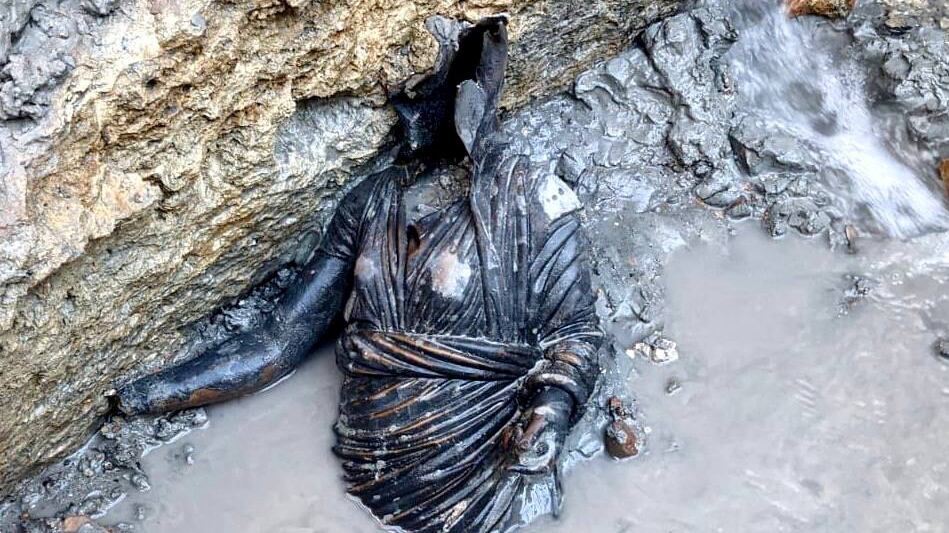ROME—The discovery of 24 perfectly-preserved bronze statues dating back to the 2nd Century B.C. at a thermal spa in Tuscany has given archeologists a rare glimpse at the past that may just “rewrite history,” they say.
The discovery was made at the San Casciano dei Bagni spa in Tuscany, which boast millennia-old natural thermal springs that attract tourists to the town to soak in the same thermal waters as emperors did.
Archeologists were hoping to uncover the original thermal bath basin when they found the first hands protruding from the oozing thermal mud two weeks ago. Since then, 24 statues, including replicas of Hygieia, the goddess of health with a snake coiled on her arm, alongside Apollo and other deities, matrons and emperors, emerged. “This is the most important discovery from the Riace Bronzes and certainly one of the most significant bronzes ever made in the history of the ancient Mediterranean,” Massimo Osanna, Italy’s director general of museums for the Culture Ministry said Tuesday when unveiling the site. The town will build museum in a 16th Century villa and develop an archeological park dedicated to the statues to keep them in situ, he said.
The statues, which were part of a votive deposit that included coins and other artifacts with inscriptions in Etruscan and Latin, were buried in the thermal waters as part of a religious rite, and were never meant to be found, Osanna said.
The excavation is the first of its kind to be unearthed in Italy, Archaeologist Jacopo Tabolli from the University for Foreigners in Siena, said Tuesday. He is leading a team of 60 experts from around the world who will study the statues to fill in historical gaps. “This is an absolute unique treasure,” he said. “It includes an incredible quantity of inscriptions in Etruscan and Latin and thousands of coins as well as a series of equally interesting vegetable offerings.”
Tabolli called the find “a discovery that will rewrite history” given that it is “the greatest store of statues from ancient Italy and in any case the only one whose context we can wholly reconstruct.”
The thermal baths where the statues were found operated from the 3rd Century B.C. until the 5th Century A.D., when public bathing was prohibited during Christian times. Archeologists were working to remove massive stone pillars that had blocked the ancient baths, and which were the focus of the current dig. Underground thermal springs feed several modern spas and baths in the area, many of which use the original terraces and slopes, but the ancient basins had not been touched for centuries.
Luigi La Rocca, general director for archeology, said archeologists, geologists, archeo-botanist and epigraphs were involved in the dig, although no one expected such an undocumented find.







